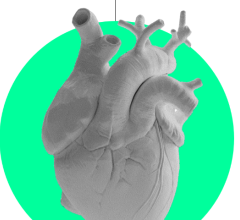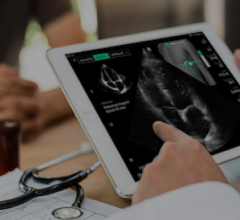Congress recently passed the Protecting Access to Medicare Act of 2014 (H.R. 4302) that delays a 24 percent Medicare physician payment cut for 12 months. The legislation also requires use of appropriate use criteria (AUC) and clinical decision support (CDS) software to get Medicare reimbursement, which will likely shift focus onto IT vendors who can supply this software. In addition, the use of CDS is part of Stage 2 Meaningful Use requirements for electronic medical records (EMR), so the new Medicare requirements will move CDS up on many IT departments' priority lists.
The legislation directs the secretary of the U.S. Department of Health and Human Services (HHS) to identify mechanisms, such as clinical decision support systems, by which ordering professionals can consult these criteria. Such ordering systems reduce duplicate and/or unnecessary scanning and associated costs. This may be the first time that Medicare would require providers to use such point-of-care, evidence-based ordering for exams or procedures.
“As medical imaging is the cutting edge of modern medicine, this requirement is a major step forward in healthcare reform. Providers will have the latest medical evidence at their fingertips before a scan is ordered — ensuring that patients get the right exam for their condition and avoid unnecessary care. This will reduce unnecessary costs and help pave the way for a more responsive and efficient healthcare system,” said Paul H. Ellenbogen, M.D., FACR, chair of the ACR Board of Chancellors, in a statement following the legislation’s passage. “The imaging provisions in this bill will help remove the conjecture from health policy regarding how much imaging is necessary, whether patients are getting appropriate care and how efficiently America is using its healthcare resources.”
However, the ACR said it has concerns regarding the broad statutory expansion of the authority of the secretary of HHS to revalue Medicare physician payments based on a large number of criteria to be used at the secretary’s discretion.
Watch the VIDEO “Examples of Clinical Decision Support for Cardiology and Radiology.”
Stage 2 CDS and CPOE Requirements
Stage 2 Meaningful Use requirements for EMR calls for the use of both clinical decision support and computerized physician order entry (CPOE). While both of these technologies are starting to find their way into both cardiology and radiology practices, the governmental guidelines for them are vague, partly because of the variety of ways the technology can be implemented to improve patient care, while at the same time reducing costs.
CDS can be closely integrated with CPOE. CPOE for pharmacy orders has been around for several years in an effort to leverage technology to reduce medication errors. These systems raise alerts to inform a physician they might have entered an adult dosage for a pediatric patient, prescribed a drug that is similar to one already being taken, or notifications for possible drug interactions or patient drug allergies.
The primary driver for pharmacy CPOE was patient safety. However, with healthcare reform, new drivers for CPOE adoption in other areas include meeting Meaningful Use, making sure tests ordered will be eligible for reimbursement, helping reduce healthcare costs, meeting guidelines for quality assurance efforts and reducing duplicate tests. Next-generation CPOE systems will integrate more sophisticated CDS software that can help determine if tests, imaging exams or procedures are appropriate and the most cost-effective solution for patients with specific conditions or symptoms listed in the EMR.
For specialties such as cardiology and radiology, CDS may find its main utility in ensuring orders entered into CPOE follow commonly accepted AUC or hospital protocol. In the case of orders for cardiac imaging, a CDS system may pull guidelines from the ACR, the American College of Cardiology (ACC) or other specialty societies, such as the American Society of Echocardiography (ASE), American Society of Nuclear Cardiology (ASNC) or the Society of Cardiovascular Computed Tomography (SCCT).
Since AUC and society clinical guidelines are based on review of evidence-based medicine, wiring them into a CPOE system can improve their compliance. For the cases where guidelines are not clear or the physician feels a different test than what is recommended in necessary, all CPOE systems allow some process to override the alerts built into the system.
An example of this is EMR vendor CliniComp, which has offered an integrated CPOE and CDS for pharmacy for years, but its system can now be customized for use in any department. In 2014, the vendor is launching a Web-based version of the software with the ability to add ancillary departments, such as radiology or cardiology. The program allows creation of a set of rules and alerts based on protocols, guidelines, alert thresholds, CPT codes or other criteria set by the hospital. The system pulls data from the entire patient EMR when assessing patients and alert criteria, including things like drug allergies and lab values.
Keeping Up To Date
While modern healthcare embraces evidence-based medicine, keeping current on all the changes in technology, U.S. Food and Drug Administration (FDA) approvals, guideline updates and massive amounts of new clinical trial data can be overwhelming. “We can’t keep up with medical information. There has been an explosion of medical journals — more than 20,000 of them. Also, there is no time,” said Timothy Counihan, M.D., FACS, FASCRS, a surgeon at Berkshire Medical Center in Pittsfield, Mass.
Also, just because the knowledge is available does not mean clinicians use it. “One hundred years ago it was discovered hand-washing helped reduce infection rates, but today we still have hand-washing rates of 25-30 percent,” he contends. For this reason he said reminders are needed, which can be provided by CDS software.
To enable clinicians at his hospital to stay up to date to ensure they meet guidelines to improve patient care, in 2011 Berkshire instituted the Zynx CDS system. The impetus for change came when the hospital was rebuilding its vascular surgery program after a popular, long-time surgeon retired. The goal was to better adhere to evidence–based medicine, reduce costs, improve outcomes and cut the length of stay.
“If you formalize a program and measure the results you will build momentum and get to where you want to go faster,” Counihan said.
The Zynx software was used to develop an array of order sets. In the area of peripheral artery disease (PAD) surgery these sets included antiplatelet therapy, lipid control, ICU stat, cardiac monitoring, deep vein thrombosis management, anti-hypothermia therapy, pain management and antibiotic prophylaxis. Each outlined evidence-based medicine protocols. These measures helped improve outcomes and caused drops in the hospital's average length of stay, said Counihan.
The Zynx software also was leveraged to create an IV contrast algorithm to decrease acute kidney injury and to develop order sets for the hospital’s endovascular aortic repair (EVAR) program.
A cardiovascular information system (CVIS) that has built a large amount of experience with CPOE and CDS is Wolters Kluwer Health’s Provation. It allows the building of order sets into CPOE. Wolters Kluwer also offers UpToDate, a point-of-care CDS subscription service. It is described as a Google for doctors for numerous specialties. It utilizes about 400 authors that monitor in excess of 400 medical journals in 21 specialties and then update the content in the software. The authors boil down the information to explain how it is relevant to patient care, instead of just pumping out information without analysis or context. The clinical information is updated daily.
Clinicians can search the system by disease state or keywords to get a suggested breakdown of topics in that area. The information posted offers references and links to current guidelines. UpToDate also can be used to search for patient education materials that are written on either a very basic level, or a higher level for patients with better reading ability and who have a solid understanding of their disease state.
“It complements the guidelines because it is up to date,” said Michael Del Core, M.D., associate director of Alegent Creighton Health Cardiology, medical director of invasive laboratory, Creighton University School of Medicine. “Some of the ACC guidelines are based on old trial data. But it’s up to us as physicians to synthesize the data and make our own decisions.”
Del Core uses the system to look up the latest information from peer review literature on numerous conditions. He frequently uses UpToDate for educational reference, especially for new diagnostic and treatment techniques. He said it is not a diagnostic tool, so the physician cannot enter symptoms and get a list of possible disease states. However, for questions on disease states outside a doctor’s day-to-day expertise, such as cardiologist looking up information on renal failure or diabetes, Del Core said it could be very helpful. A lot of primary care physicians use the system to get a better understanding of information in specialty areas they are not familiar with.
CDS/CPOE to Improve Outcomes
Carolinas Healthcare System is working toward a fully integrated, enterprise-wide CPOE and CDS system across its hospitals. It adopted CPOE for pharmacy in 2011, expanded CPOE to other specialties in 2012, and went to a fully deployed EMR and utilization of CDS in 2013. The healthcare system is now working to integrate advanced CDS in 2014.
CPOE order sets were developed for all specialties, said Stephanie Harrell, RN-BC, CPHIMS, CPHQ, BA, manager, clinical transformation and evidence-based care, Carolinas Healthcare System. She said these order sets are reviewed and updated every two years.
The health system is now working to implement advanced CDS workflows to help improve its patient outcomes. One of the first tests for this was the creation of a venous thromboembolism (VTE) prophylaxis program.
“We did not see the kind of compliance we were looking for in CPOE alone, so we created a new process,” Harrell said. She explained the VTE protocols were not always followed and the system wanted to improve compliance. After a committee review of where some breakdowns in the system were, they implemented a new process. This includes actions required following a CPOE order that would require VTE prophylaxis. The process changed from nurses to physicians being held accountable. The computer system uses visible reminders and raises an alert if items are missing from the EMR that show part of the prophylaxis was not entered as completed.
Harrell acknowledged a cultural change is needed for compliance for these types of measures, so in addition to the technology, the health system used an education campaign to raise awareness as to why this was important. She said one of the most successful elements of this was a poster of an airliner with the text “Would you fly an airliner that has only been checked for mechanical malfunctions 70 percent of the time?” — a reference to the hospital’s VTE prophylaxis rate at the time. After implementation of the advanced CDS system, the prophylaxis rates went up to 90 percent.
“There had never been any way to see where the gap was, but this new system allows us to see the data in real time,” she explained.
Many picture archiving and communications systems (PACS) and CVIS vendors have added CPOE and CDS software to their systems in the past year. However, it is very likely all major vendors will add these features in the coming months as software updates due to the recent Medicare legislation. Some of these will be software developed in-house, but many IT vendors will likely opt to partner with existing CDS companies to reduce development and maintenance costs involved with regularly changing guidelines.
Help in Patient Monitoring
CDS can help monitor patient data from multiple sources to help prevent deterioration of their condition while on a cardiac floor. Philips offers the Guardian software solution to support the nursing care team, more so than for physicians. The software watches for small changes in vital signs and sends early alerts if they show a worsening of the patients condition while it is still easy to treat. The system lists the changes at a nurses monitoring station and can automatically notify the nurse responsible for the patient by phone or Vocera device. Philips said use of the system has resulted in up to a 70 percent drop in code blues and greatly reduced the need to send patients to a telemetry unit.


 January 16, 2026
January 16, 2026 









